
Marine expeditionary units are the smallest air-ground task forces (MAGTF) in the United States Fleet Marine Force. Each MEU is an expeditionary quick reaction force, deployed and ready for immediate response to any crisis, whether it be natural disaster or combat missions. Marine amphibious unit (MAU) was the name used until the late 1980s.

Force Reconnaissance (FORECON) is one of the United States Marine Corps' special operations capable forces (SOC) which supplies military intelligence to the command element of the Marine Air-Ground Task Force (MAGTF). Force Reconnaissance companies unlike USMC division reconnaissance report to the Marine Expeditionary Force (MEF) and provide direct action and deep reconnaissance during large-scale operations.
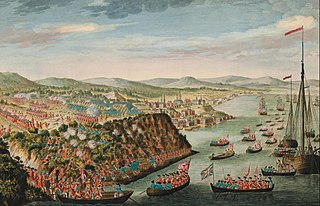
Amphibious warfare is a type of offensive military operation that today uses naval ships to project ground and air power onto a hostile or potentially hostile shore at a designated landing beach. Through history the operations were conducted using ship's boats as the primary method of delivering troops to shore. Since the Gallipoli Campaign, specialised watercraft were increasingly designed for landing troops, material and vehicles, including by landing craft and for insertion of commandos, by fast patrol boats, zodiacs and from mini-submersibles.

The Expeditionary Fighting Vehicle (EFV) was an amphibious assault vehicle developed by General Dynamics during the 1990s and 2000s for use by the U.S. Marine Corps. It would have been launched at sea, from an amphibious assault ship beyond the horizon, able to transport a full Marine rifle squad to shore. It would maneuver cross country with an agility and mobility equal to or greater than the M1 Abrams.

Marines, or naval infantry, are typically a military force trained to operate in littoral zones in support of naval operations. Historically, tasks undertaken by marines have included helping maintain discipline and order aboard the ship, the boarding of vessels during combat or capture of prize ships, and providing manpower for raiding ashore in support of the naval objectives. In most countries, the marines are an integral part of that state's navy.

The Philippine Marine Corps (PMC) is the marine corps of the Philippines, a naval infantry force under the command of the Philippine Navy. The PMC conducts amphibious, expeditionary, and special operations missions.
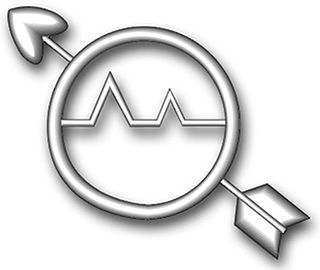
Operations Specialist is a United States Navy and United States Coast Guard occupational rating. It is a sea duty-intensive rating in the Navy while most of Coast Guard OS's are at ashore Command Centers.

Visit, board, search, and seizure (VBSS) is the term used by United States military and law enforcement agencies for maritime boarding actions and tactics. VBSS teams are designed to capture enemy vessels, combat terrorism, piracy, and smuggling, and to conduct customs, safety and other inspections.
Expeditionary warfare is a military invasion of a foreign territory, especially away from established bases. Expeditionary forces were in part the antecedent of the modern concept of rapid deployment forces. Traditionally, expeditionary forces were essentially self-sustaining with an organic logistics capability and with a full array of supporting arms.
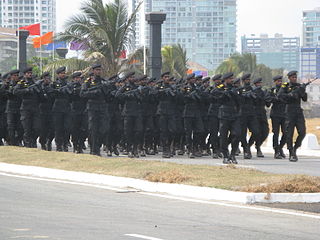
The Special Boat Squadron is the Sri Lanka Navy's elite special forces unit, modeled after the British Special Boat Service. It was raised in 1993 and fought in the Sri Lankan Civil War.

USS America (LHA-6), is an amphibious assault ship of the United States Navy and the lead ship of the America-class amphibious assault ship. The fourth U.S. warship to be named for the United States of America, she was delivered in spring of 2014, replacing Peleliu of the Tarawa class. Her mission is to act as the flagship of an expeditionary strike group or amphibious ready group, carrying part of a Marine expeditionary unit into battle and putting them ashore with helicopters and V-22 Osprey tilt-rotor aircraft, supported by F-35B Lightning II aircraft and helicopter gunships.
Seebataillon, literally "sea battalion", is a German term for certain troops of naval infantry or marines. It was used by the Prussian Navy, the North German Federal Navy, the Imperial German Navy, the Austro-Hungarian Navy, the Kriegsmarine, and briefly in the Bundesmarine. In 2014, also the modern German Navy established a naval force protection unit called Seebataillon.
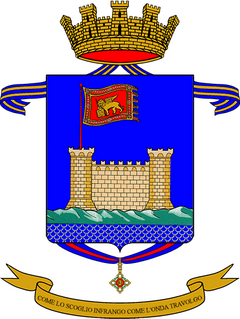
The Lagunari Regiment "Serenissima" Italian: Reggimento Lagunari "Serenissima" is the only unit of the Lagunari, the Italian Army's infantry corps' amphibious speciality. The name of the specialty comes from the Italian word for lagoon, while the regiment's name "Serenissima" commemorates the Republic of Venice. The regiment is based in Venice and part of the Cavalry Brigade "Pozzuolo del Friuli". The "Pozzuolo del Friuli" brigade forms with the Italian Navy's Third Naval Division, and San Marco Marine Brigade the Italian military's Forza di protezione dal mare.

The United States Navy (USN) is the maritime service branch of the United States Armed Forces and one of the eight uniformed services of the United States. It is the largest and most powerful navy in the world, with the estimated tonnage of its active battle fleet alone exceeding the next 13 navies combined, including 11 U.S. allies or partner nations as of 2015. It has the highest combined battle fleet tonnage and the world's largest aircraft carrier fleet, with eleven in service, two new carriers under construction, and five other carriers planned. With 336,978 personnel on active duty and 101,583 in the Ready Reserve, the U.S. Navy is the third largest of the U.S. military service branches in terms of personnel. It has 290 deployable combat vessels and more than 2,623 operational aircraft as of June 2019.
The Marine Corps Test Unit 1, or MCTU #1, was an experimental testing unit of the United States Marine Corps. It was established outside the Fleet Marine Force for the development of specialized tactics, techniques and organizational concepts, and to evaluate its tangible employment in the nuclear age. It reported directly to the Commandant of the Marine Corps.
The United States Marine Corps is assigned by the National Command Authority to be primarily the Department of Defense's expeditionary force-in-readiness, and the Department of the Navy's contingent landing force—amphibious by nature. Before 2006, the Marine Corps was the only branch of the Armed Forces that did not have any of its special warfare elements participating in the United States Special Operations Command (USSOCOM), due to confining its special operations capabilities only for the purpose to the Fleet Marine Force.
The reconnaissance mission within the United States Marine Corps is divided into two distinct but complementary aspects; Marine Division Recon and Force Reconnaissance.
Marine Tactical Data System, commonly known as MTDS, was a mobile, ground based, aviation command and control system developed by the United States Marine Corps for the execution of anti-air warfare in support of the Fleet Marine Force (FMF). It was the Marine Corps' first semi-automated system capable of collecting, processing, computing and displaying aircraft surveillance data while also sharing that information with other participating units via tactical data link. The system was developed in the late 1950s/early 1960s when it was recognized that due to the speed, range and complexity of fighter aircraft operations effective air control and air defense demanded enhanced situational awareness.

Marine Air Control Squadron 3 (MACS-3) was a former United States Marine Corps aviation command and control squadron. During its later years it also served as an operational test and evaluation squadron. Originally formed in World War II as Air Warning Squadron 12 (AWS-12), its original mission was to provide aerial surveillance and ground-controlled interception (GCI) for Marine Corps forces during amphibious operations. The squadron did not participate in combat operations during WWII however it did deploy and operate during the Korean War. In 1961, MACS-3 was transferred from the Fleet Marine Force to the administrative control of Air, Fleet Marine Forces Pacific in order to serve as the operational test and evaluation squadron for what was at the time, the largest research and development project in the Marine Corps - Marine Tactical Data System (MTDS). After MTDS testing was complete the Marine Corps recognized that it was not properly staffed to develop, test, and acquire new digital equipment. On 1 July 1970, MACS-3 was decommissioned and its structure and equipment were utilized to form Marine Corps Tactical Systems Support Activity (MCTSSA) at Marine Corps Base Camp Pendleton, California. Of note, MCTSSA does not carry MACS-3's lineage and honors.
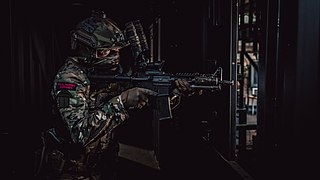
The Future Commando Force (FCF) is an in-progress modernisation programme and model of the future role and operations of the Royal Marines. The FCF essentially retasks 40 Commando and 45 Commando with implementing the infantry component of two Littoral Response Groups (LRGs), though other units from 3 Commando Brigade are also included in the composition of LRGs, as well as changing the role and operations of the Royal Marines and the equipment and tactics they use. The FCF concept was created before 2019, when the first exercises and experiments with the FCF began. It was reinforced in the Ministry of Defence command paper Defence in a Competitive Age, which followed the Integrated Review. It describes the Royal Marines as a forward-deployed maritime special operations/special operations capable force which will work with greater agility and autonomy, and in smaller teams that specialise in raids within littoral zones, and operations within grey zones and other special operations to relieve and complement United Kingdom Special Forces (UKSF). The emphasis on the littoral role of the Royal Marines strongly links the FCF to the Littoral Strike concept, which is being developed and implemented by the LRGs. The FCF is also strongly linked to the "Autonomous Advanced Force" concept by its emphasis on leveraging new technologies to augment commandos on operations. A series of exercises from 2019–present have been key to developing the FCF, chiefly with experimentation.













